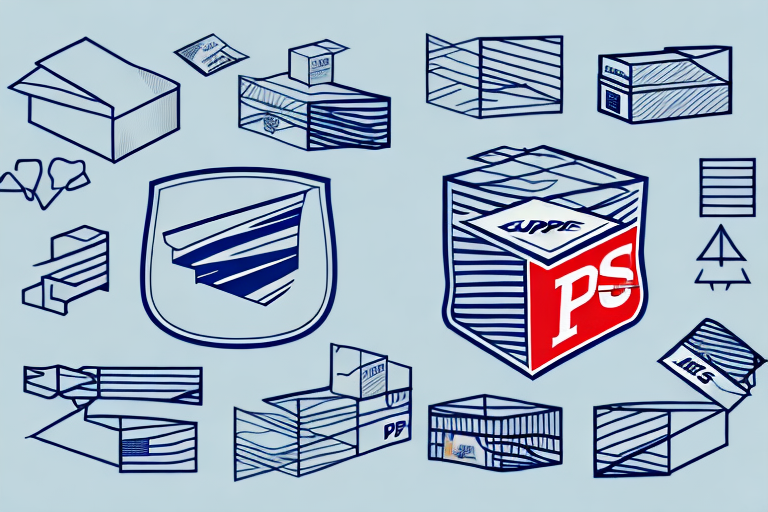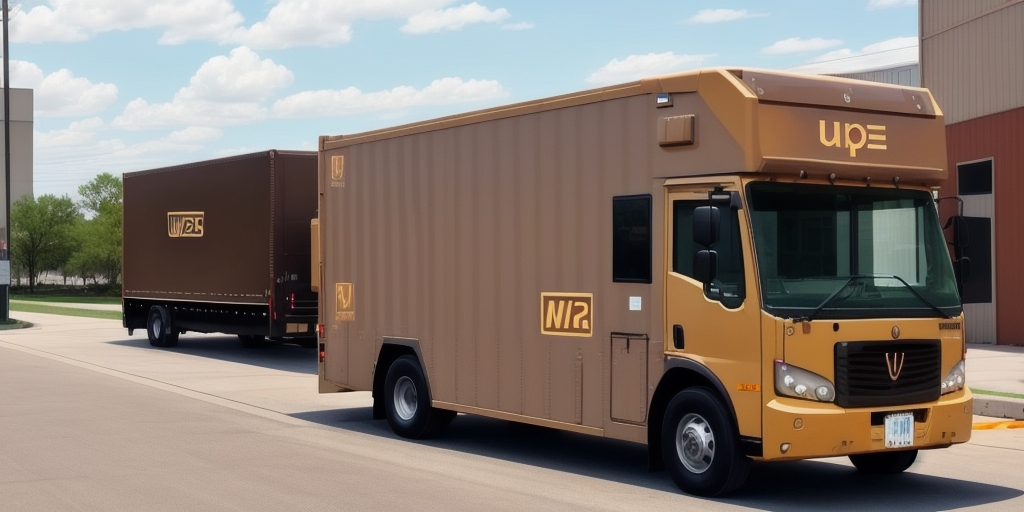Understanding Economy Shipping
Economy shipping is a cost-effective method of transporting goods that leverages the most affordable available transportation options. While it is slower compared to expedited or overnight shipping, it serves as an ideal choice for businesses that do not require immediate delivery of their products. Economy shipping can involve various modes of transportation, including land, sea, or air, or a combination thereof, depending on the provider.
Basics of Economy Shipping
Economy shipping prioritizes affordability over speed. By utilizing slower transportation methods, such as ground or sea, it minimizes costs, making it suitable for non-urgent shipments. This method is particularly beneficial for businesses shipping bulk items or non-perishable goods.
Environmental Benefits
One significant advantage of economy shipping is its lower environmental impact. Slower transportation methods, especially sea and ground shipping, result in reduced carbon emissions compared to air shipping. According to the Environmental Protection Agency, optimizing transportation modes can play a crucial role in sustainability efforts.
Benefits of Economy Shipping
Economy shipping offers several advantages that make it a preferred choice for many businesses:
Cost Savings
The primary benefit of economy shipping is its affordability. By selecting the most cost-effective transportation methods, businesses can significantly reduce their shipping expenses. This is particularly advantageous when shipping larger or heavier items over long distances.
Flexible Delivery Timelines
Economy shipping typically offers more flexible delivery windows compared to expedited services. This flexibility allows businesses to plan their logistics without the pressure of strict delivery deadlines, thereby optimizing their supply chain processes.
Environmental Sustainability
Choosing economy shipping supports environmental sustainability by reducing the carbon footprint of shipping operations. Businesses committed to green practices benefit from the lower emissions associated with slower transportation modes.
Visibility and Tracking
Many economy shipping providers offer robust tracking tools, allowing businesses to monitor their shipments in real-time. This enhanced visibility helps in managing inventory more effectively and ensures timely deliveries.
Comparing Economy Shipping with Other Methods
When selecting a shipping method, it’s essential to weigh the pros and cons of each option:
Expedited and Overnight Shipping
Expedited shipping services, such as overnight delivery, prioritize speed over cost. While they ensure quick delivery times, they come at a higher price point. Economy shipping, on the other hand, offers a balance between cost and delivery time, making it suitable for non-urgent shipments.
Air vs. Land vs. Sea Transportation
- Air Shipping: Fast but expensive, ideal for high-value or time-sensitive items.
- Land Shipping: Cost-effective for domestic shipments but slower over long distances.
- Sea Shipping: Highly economical for international bulk shipments but subject to longer transit times.
Suitability Based on Destination
The choice of shipping method can also depend on the destination. For international shipments, sea freight may be more economical, whereas air freight might be necessary for faster delivery. Economy shipping options may vary based on geographic locations and logistical considerations.
Eligible Products for Economy Shipping
Economy shipping is versatile and can accommodate a wide range of products. However, certain restrictions may apply based on the product's size, weight, and fragility.
Commonly Shipped Items
- Clothing and apparel
- Books and educational materials
- Electronics and gadgets
- Household items and non-perishable goods
Packaging Considerations
Proper packaging is essential to ensure that products arrive safely when using economy shipping. Fragile or perishable items may require additional packaging materials or alternative shipping methods to prevent damage during transit.
Evaluating the Costs of Economy Shipping
The cost of economy shipping depends on several factors, including the weight and dimensions of the package, the delivery destination, and the chosen shipping provider.
Factors Affecting Cost
- Weight and Dimensions: Heavier and larger packages incur higher shipping costs.
- Distance: Longer distances typically result in higher shipping fees.
- Provider Rates: Different providers have varying pricing structures and discounts.
Minimizing Shipping Costs
Businesses can reduce their shipping expenses by:
- Choosing providers that offer competitive rates.
- Bundling shipments to maximize space and reduce per-item costs.
- Optimizing packaging to minimize size and weight.
- Negotiating bulk shipping discounts based on volume.
Additionally, implementing strategies such as offering free shipping for orders above a certain threshold can enhance customer satisfaction while managing costs effectively.
Challenges and Solutions in Economy Shipping
Despite its benefits, economy shipping comes with its own set of challenges that businesses must address:
Delayed Delivery
One of the main drawbacks of economy shipping is the potential for delayed deliveries, which can impact customer satisfaction. To mitigate this risk, businesses should:
- Provide accurate shipping information to minimize delays.
- Select reliable providers with proven track records.
- Optimize packaging to prevent transit issues.
Lack of Tracking Information
Limited tracking capabilities can make it difficult to monitor shipments. Businesses can overcome this by:
- Choosing providers that offer comprehensive tracking services.
- Integrating third-party tracking systems into their logistics process.
Limited Shipping Options
Economy shipping may not be available for all destinations, especially international or remote locations. In such cases, businesses can:
- Explore alternative shipping methods like express or priority shipping.
- Partner with multiple carriers to expand their shipping options.
Top Economy Shipping Providers
Several providers offer economy shipping services, each with its own set of features and pricing structures. It’s crucial to compare these providers to find the best fit for your business needs.
Major Carriers
- FedEx: Offers a range of economy services with reliable tracking options.
- UPS: Provides economical shipping solutions for both domestic and international shipments.
United States Postal Service (USPS)
USPS is a popular choice for economy shipping, offering options like First-Class Mail and Priority Mail. These services are cost-effective for smaller packages and provide flat-rate shipping options for heavier items.
Comparing Providers
When selecting a shipping provider, consider the following:
- Pricing and available discounts.
- Delivery times and reliability.
- Tracking and insurance options.
- Coverage for your target shipping destinations.
Researching and comparing these factors will help in choosing a provider that aligns with your business requirements.
Overcoming Challenges in Economy Shipping
To effectively navigate the challenges associated with economy shipping, businesses should implement strategic measures:
Ensuring Timely Delivery
- Use reliable shipping providers with a proven track record.
- Provide accurate and complete shipping information.
- Monitor shipments regularly to anticipate and address delays.
Improving Tracking and Visibility
- Invest in advanced tracking systems to maintain oversight of shipments.
- Choose providers that offer detailed tracking information and updates.
Expanding Shipping Options
- Partner with multiple carriers to cover a wider range of destinations.
- Explore hybrid shipping solutions that combine different transportation modes.
Future Trends in Economy Shipping
The landscape of economy shipping is evolving with advancements in technology and changing consumer demands:
Technological Innovations
Emerging technologies such as automation, artificial intelligence, and blockchain are poised to revolutionize economy shipping. These innovations can enhance efficiency, improve tracking accuracy, and reduce costs.
Green Shipping Initiatives
There is a growing emphasis on sustainable shipping practices. Future trends indicate a shift towards greener transportation methods, including the use of electric vehicles and eco-friendly packaging materials.
Autonomous Deliveries
The integration of drones and autonomous vehicles into shipping operations promises faster and more efficient delivery processes, potentially reshaping the future of economy shipping.
Conclusion: Is Economy Shipping Worth It?
Economy shipping presents a viable option for businesses seeking to minimize shipping costs while maintaining reliable delivery services. Its benefits, including cost savings, environmental sustainability, and flexible delivery timelines, make it an attractive choice for non-urgent shipments.
However, businesses must carefully consider the potential drawbacks, such as longer delivery times and limited shipping options. By evaluating their specific needs and balancing cost with reliability, businesses can determine whether economy shipping aligns with their operational goals.
Ultimately, economy shipping is a valuable component of a comprehensive shipping strategy, offering businesses the flexibility to optimize their logistics and enhance customer satisfaction.








